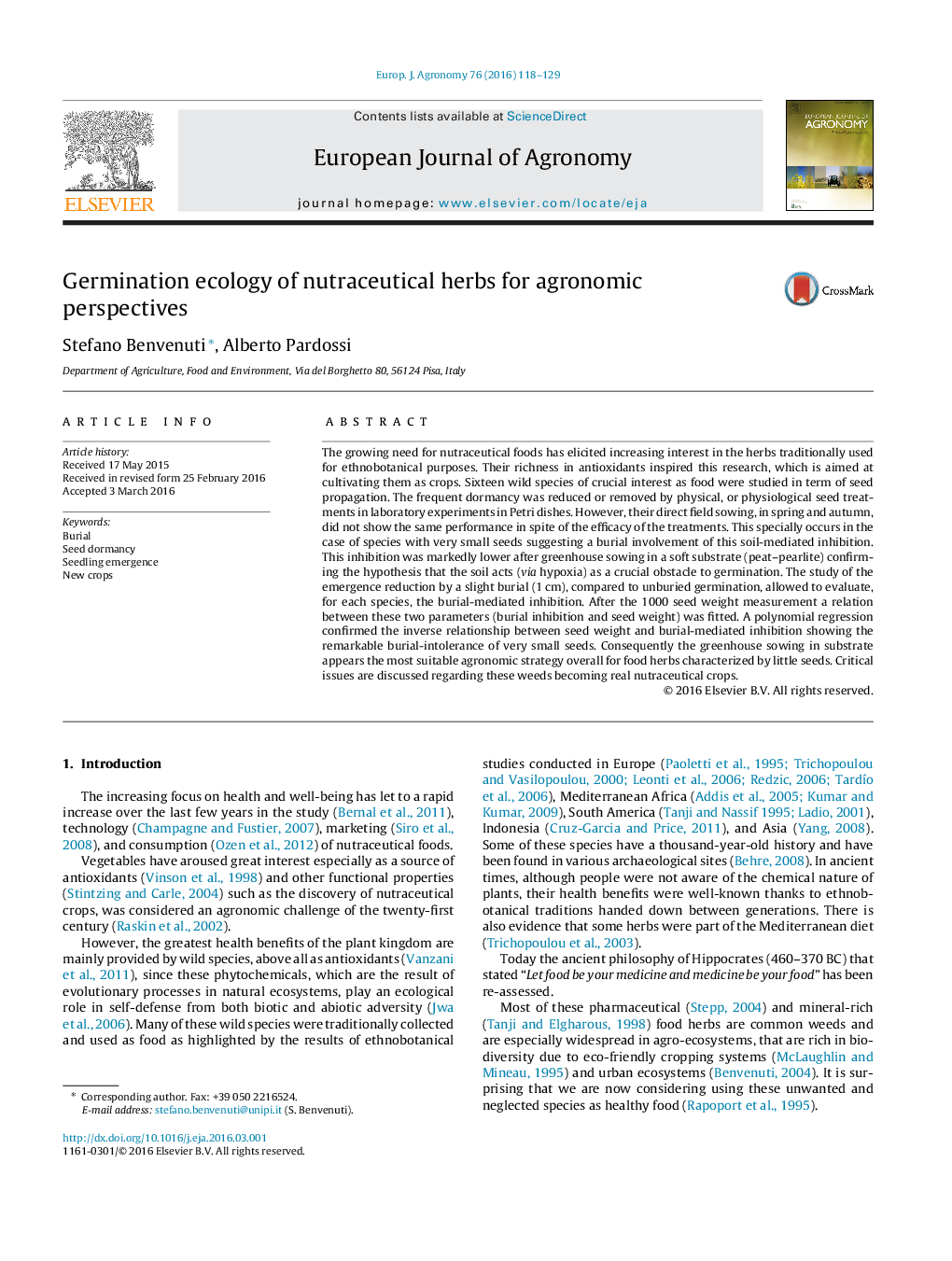| Article ID | Journal | Published Year | Pages | File Type |
|---|---|---|---|---|
| 6374262 | European Journal of Agronomy | 2016 | 12 Pages |
Abstract
The growing need for nutraceutical foods has elicited increasing interest in the herbs traditionally used for ethnobotanical purposes. Their richness in antioxidants inspired this research, which is aimed at cultivating them as crops. Sixteen wild species of crucial interest as food were studied in term of seed propagation. The frequent dormancy was reduced or removed by physical, or physiological seed treatments in laboratory experiments in Petri dishes. However, their direct field sowing, in spring and autumn, did not show the same performance in spite of the efficacy of the treatments. This specially occurs in the case of species with very small seeds suggesting a burial involvement of this soil-mediated inhibition. This inhibition was markedly lower after greenhouse sowing in a soft substrate (peat-pearlite) confirming the hypothesis that the soil acts (via hypoxia) as a crucial obstacle to germination. The study of the emergence reduction by a slight burial (1Â cm), compared to unburied germination, allowed to evaluate, for each species, the burial-mediated inhibition. After the 1000 seed weight measurement a relation between these two parameters (burial inhibition and seed weight) was fitted. A polynomial regression confirmed the inverse relationship between seed weight and burial-mediated inhibition showing the remarkable burial-intolerance of very small seeds. Consequently the greenhouse sowing in substrate appears the most suitable agronomic strategy overall for food herbs characterized by little seeds. Critical issues are discussed regarding these weeds becoming real nutraceutical crops.
Related Topics
Life Sciences
Agricultural and Biological Sciences
Agronomy and Crop Science
Authors
Stefano Benvenuti, Alberto Pardossi,
